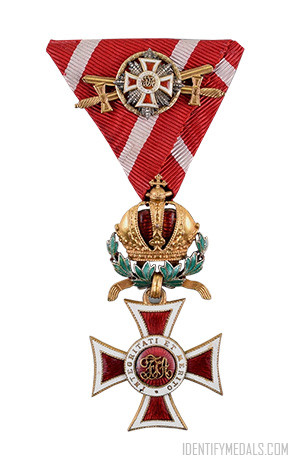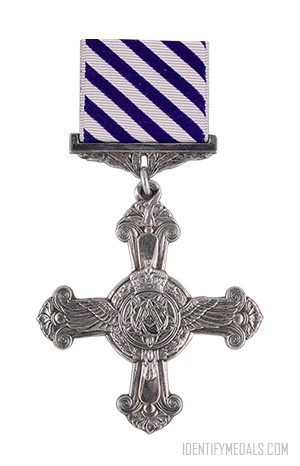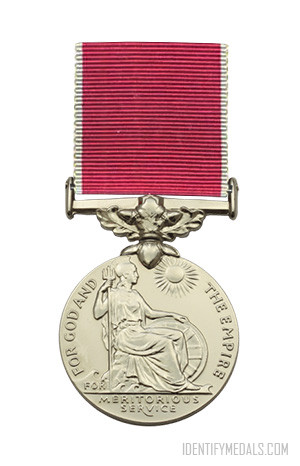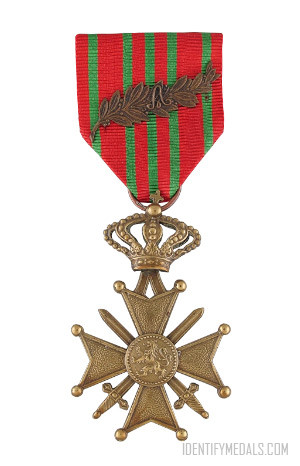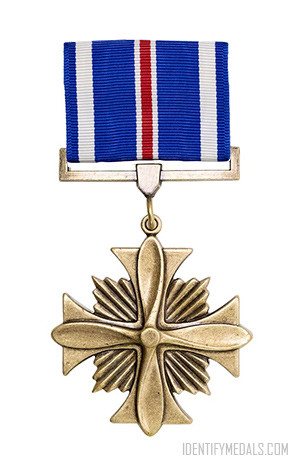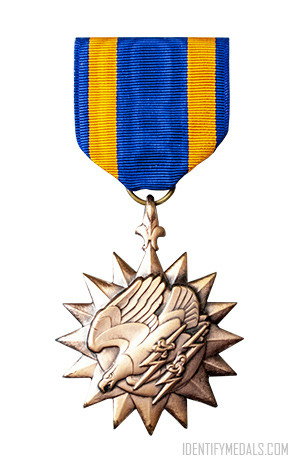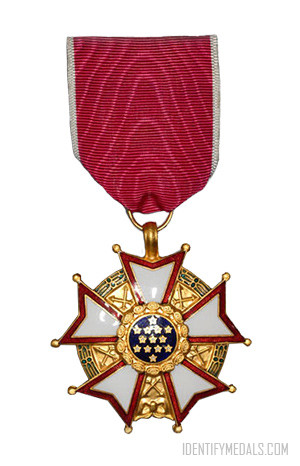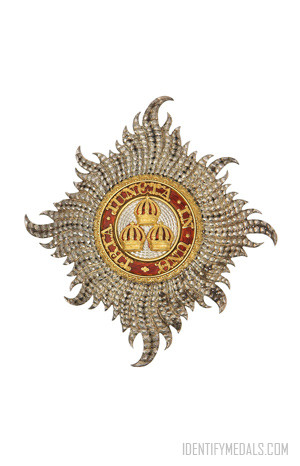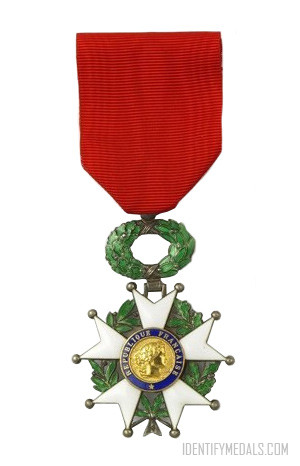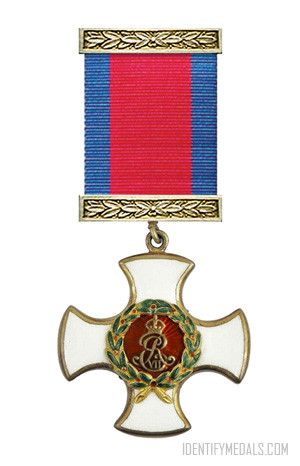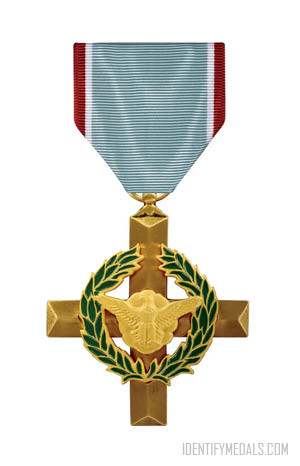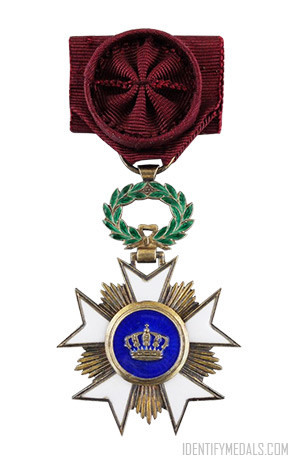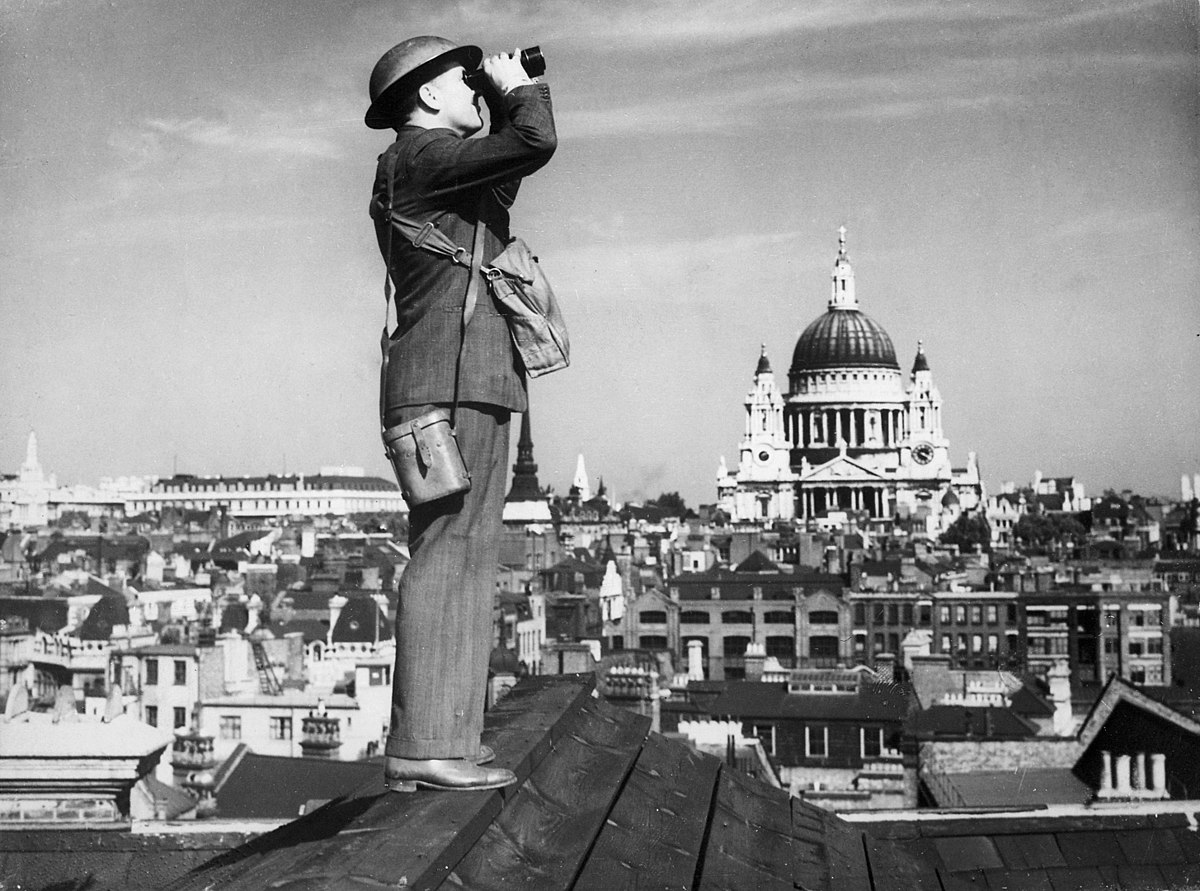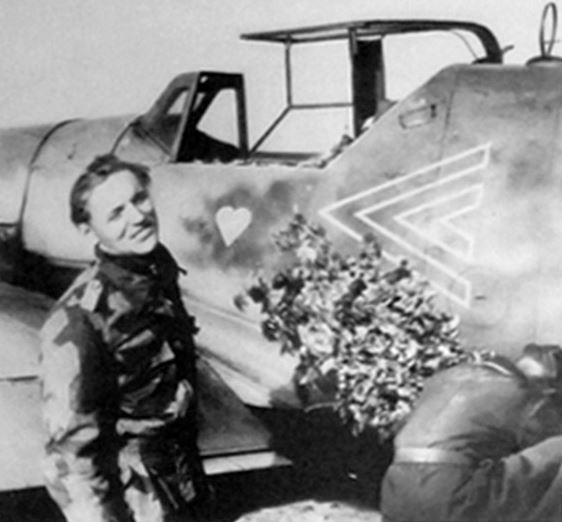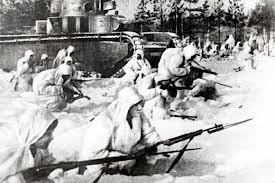The Royal Air Force (RAF) had several notable flying aces during World War II, including Douglas Bader, famous for flying with two artificial legs after losing both legs in a pre-war flying accident. Bader is credited with shooting down 20 enemy aircraft.
The Royal Air Force (RAF) had several notable flying aces during World War II, including Douglas Bader, famous for flying with two artificial legs after losing both legs in a pre-war flying accident. Bader is credited with shooting down 20 enemy aircraft. Other notable RAF aces include Johnnie Johnson, credited with shooting down 38 enemy aircraft, and James “Ginger” Lacey, who shot down 28 enemy aircraft. In this article, we will present the top 10 Fighter Aces (flying aces or simply air aces) of the United Kingdom and what they did to be awarded this honor.
What is a Flying Ace, and How Many Does the UK Have?
A fighting ace, flying ace or air ace is a military aviator credited with shooting down at least five enemy aircraft during aerial combat. The concept emerged in 1915 during World War I (Adolphe Pégoud was the first person described by French newspapers as l’As after becoming the first pilot to down five German aircraft). The individual actions of aces were then widely reported and celebrated, usually to provide the home front with a cult of the hero in what was otherwise a war of attrition. During the Second World War, German aces were colored by grandiose Nazi propaganda, although Luftwaffe pilots generally flew many more individual sorties than their Allied counterparts.
During the Battle of Britain, RAF pilots claimed to have shot down about 2,600 German aircraft. Of 2,332 Allied pilots who flew fighters in the Battle, 38.90 percent could claim some success in terms of enemy aircraft shot down. During the battle, 188 RAF pilots achieved the distinction of aces – about eight percent of the total involved.
Top 10 Flying Aces of the United Kingdom
Below is the list of the top ten aces from the United Kingdom that fought during World War II. (Note: Three names have been temporarily excluded due to lack of sources, we hope to add them soon. These are Arthur Robert Moore, Wilfrith Peter Green and Norman Arthur Kynaston).
#1 - James Edgar “Johnnie” Johnson
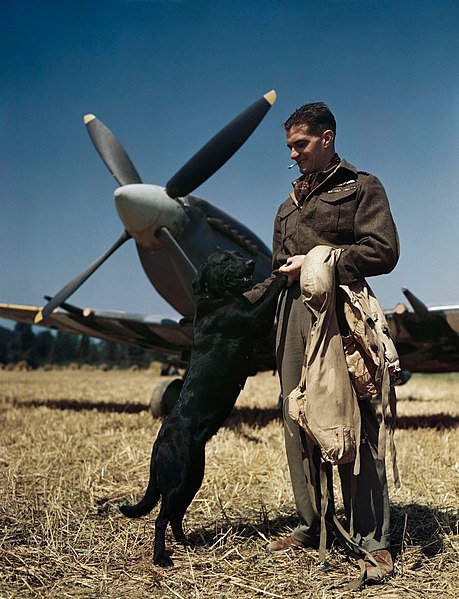
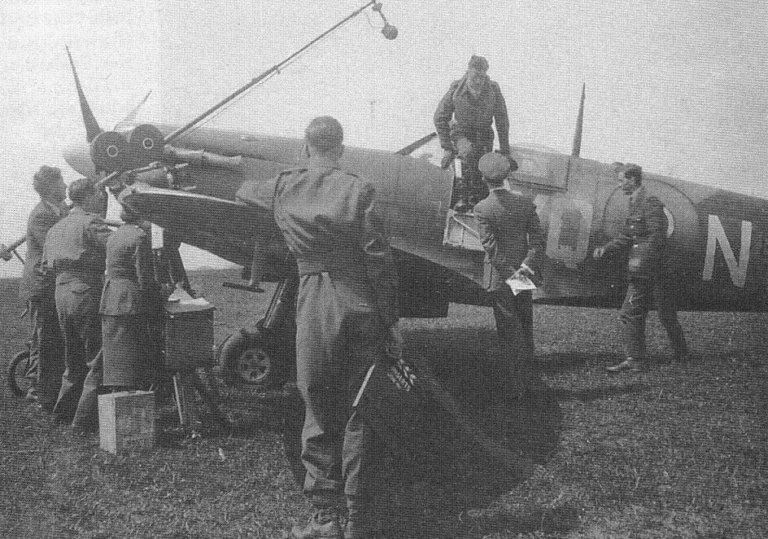
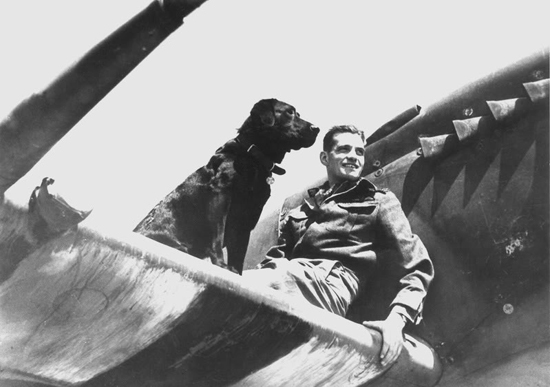
Number of Victories: 38
Air Vice-Marshal James Edgar Johnson (9 March 1915 – 30 January 2001), nicknamed “Johnnie”, was a Royal Air Force (RAF) pilot and the Top British Ace of War.
Johnson grew up and was educated in the East Midlands, where he qualified as an engineer. He had been interested in aviation since his youth and applied to join the RAF, and although he was initially rejected on social and medical grounds, he was eventually accepted in August 1939. He took part in the offensive sweeps over German-occupied Europe from 1941 to 1944, almost without rest.
Johnson was credited with 34 individual victories over enemy aircraft and seven shared victories during the Dieppe Raid, Combined Bomber Offensive, Battle of Normandy, Operation Market Garden, the Battle of the Bulge, and the Western Allied invasion of Germany. He flew 700 operational sorties and engaged enemy aircraft on 57 occasions, which included the destruction of 14 Messerschmitt Bf 109s 🔗 and 20 Focke-Wulf Fw 190s 🔗.
Johnson continued his career in the RAF after the war and served in the Korean War before retiring in 1966 with the rank of air vice marshal.
Medals and Awards
Distinguished Service Order & Two Bars, Distinguished Flying Cross & Bar, Companion Of The Bath, Commander of the Order of the British Empire, Officer of the Order of Leopold with Palms (Belgium), Croix de guerre (Belgium), Legion of Merit (US), Distinguished Flying Cross (US), Air Medal (US), Commander of the Legion of Honour (France).
#2 - William “Cherry” Vale
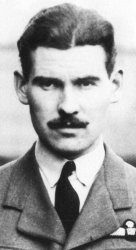
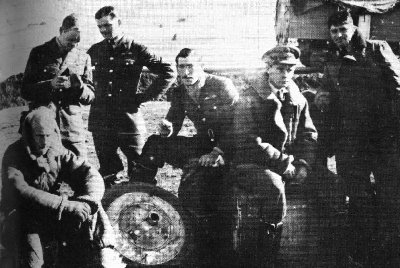
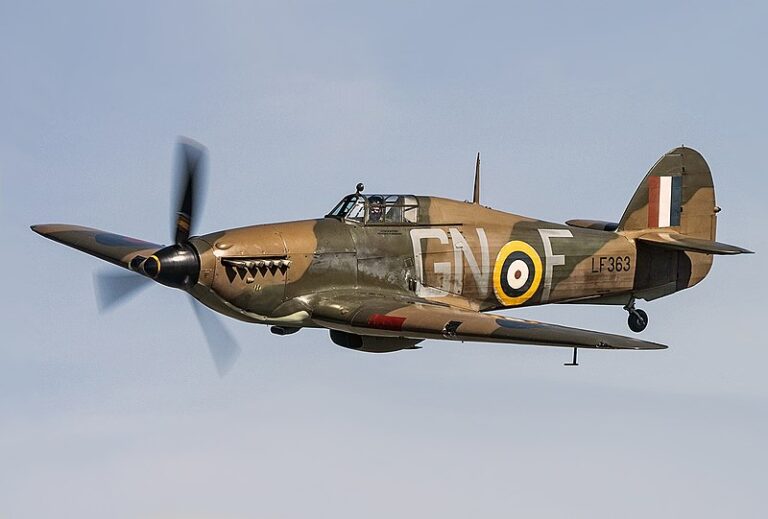
Number of Victories: 33
William “Cherry” Vale (3 June 1914 – 29 November 1981) was a Royal Air Force (RAF) fighter pilot credited with 30 enemy aircraft shot down. He shared in the destruction of three others and claimed six damaged and another two shared damaged.
Born in Chatham, Kent, William Vale entered the Royal Air Force (RAF) in 1931 as a fitter and then as a gunner. In 1935 he was posted to No. 33 Squadron RAF in Egypt, equipped with the Hawker Hart, where he began training as a pilot at No. 4 Flying Training School, Abu Suwayr. Based in Egypt at the beginning of the war, Vale flew operations over the Libyan border. In July, Vale was posted to No. 80 Squadron RAF, and saw action over Greece and the Balkans through late 1940 and early 1941.
His 20 kills achieved while flying the Hawker Hurricane 🔗 and his 10 with the Gloster Gladiator 🔗 made him the second-highest scoring Hurricane and biplane pilot in the RAF, in both cases after Marmaduke Pattle.
Medals and Awards
Distinguished Flying Cross & Bar, Air Force Cross, Mentioned in Despatches.
#3 - Brendan Eamon Fergus “Paddy” Finucane
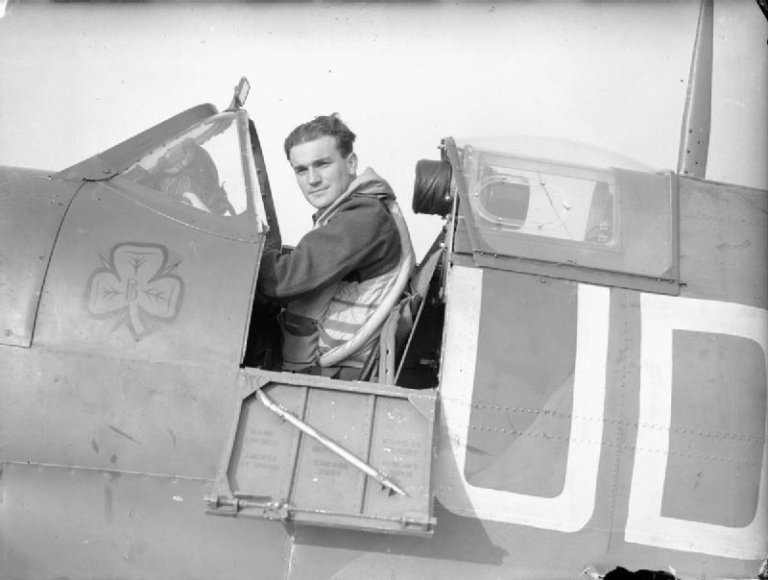
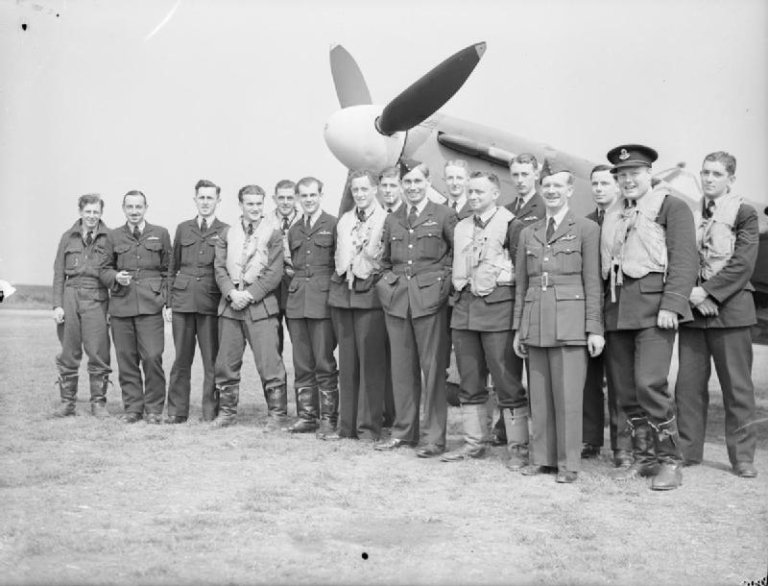
Number of Victories: 32
Wing Commander Brendan Eamonn Fergus Finucane (16 October 1920 – 15 July 1942), also known as Paddy Finucane amongst his colleagues, was a Royal Air Force (RAF) fighter pilot whose first victory was scored on 12 August 1940 during the Battle of Britain.
Finucane was born into a Catholic family in Ireland and grew up during the “early troubles” and the Irish Civil War. In 1936, the family moved to England, where he developed an interest in aviation. He applied to join the RAF and, in August 1938, was accepted for flight training as a pilot. In June–July 1940, he began conversion training on the Supermarine Spitfire 🔗, and on 13 July, Finucane was posted to No. 65 Squadron at RAF Hornchurch.
Promoted to acting flight lieutenant in April 1941, he joined No. 452 Squadron flying offensive patrols over France, where he had his most successful period of operations, destroying 20 German aircraft, sharing in the destruction of three, with two damaged and another two probably destroyed from 4 January to 13 October 1941.
Within six months as a squadron leader in No. 602 Squadron, he was credited a further six individual victories bringing his tally to 28. In June 1942, he became the RAF’s youngest wing commander in its history.
On 15 July 1942, Finucane took off with his flight for a mission over France. His Spitfire was damaged by ground fire, and he was forced to ditch into the sea on his way back to England across the English Channel. He subsequently vanished. His total victory count could be as high as 32.
Medals and Awards
Distinguished Flying Cross & Two Bars, Distinguished Service Order.
#4 - John Randall Daniel “Bob” Braham
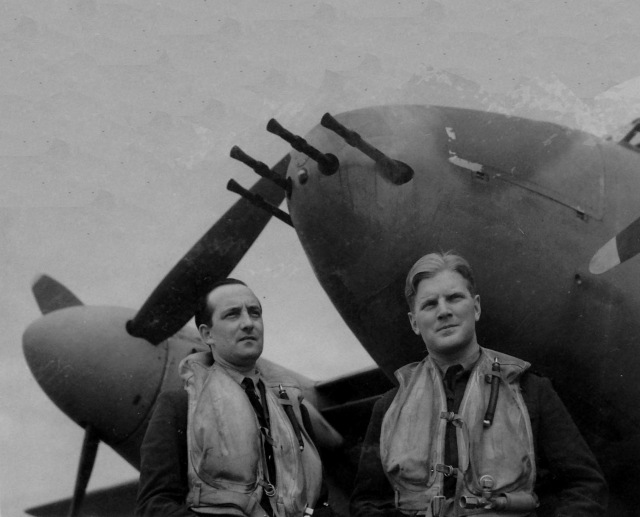
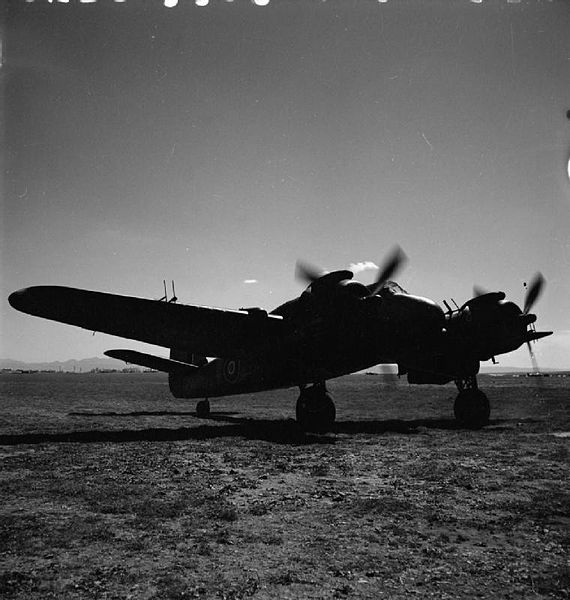
Number of Victories: 29
John Randall Daniel “Bob” Braham (6 April 1920 – 7 February 1974) was a Royal Air Force (RAF) night fighter pilot and the most highly decorated airman in RAF Fighter Command.
Braham joined the RAF on a five-year short service commission in December 1937 and began basic training in March 1938. Upon the completion of flight training, he was posted to No. 29 Squadron RAF, where he learned to fly the Hawker Hurricane and Bristol Blenheim. In 1939 the squadron began to organize itself as a specialized night fighter unit.
He gained his first victory on 24 August 1940 during the Battle of Britain. In September of the same year, No. 29 Squadron was re-equipped with the Bristol Beaufighter 🔗. Braham continued to operate as an anti-intruder pilot after the Blitz ended in May 1941.
He became an ace in September 1941, and in June 1942, he was promoted to squadron leader. By October 1942, Braham had claimed 12 enemy aircraft destroyed, claimed a U-boat damaged, and an E-boat destroyed. He was then promoted to wing commander, given command of No. 141 Squadron RAF, and undertook more intruder sorties into German-occupied Europe. The squadron soon converted to the De Havilland Mosquito, and in February 1944, Braham was transferred to the operations staff at No. 2 Group RAF.
Braham was shot down by a pair of single-engine German Focke-Wulf Fw 190 fighters on 24 June 1944, captured and spent the rest of the war as a prisoner. He was liberated in May 1945. By the time, he had claimed the destruction of 29 enemy aircraft (nineteen at night), and claimed a further six damaged and four probable victories.
Medals and Awards
Distinguished Service Order & Two Bars, Distinguished Flying Cross & Two Bars, Air Force Cross, Order of the Crown (Belgium), Croix de guerre (Belgium).
#5 - Neville Frederick Duke
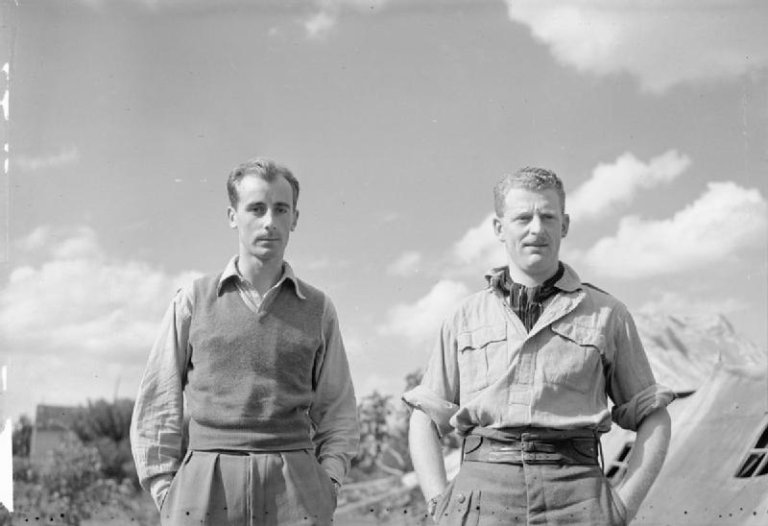
Number of Victories: 29
Neville Frederick Duke (11 January 1922 – 7 April 2007) was a British test pilot and the most successful Western Allied ace in the Mediterranean Theatre – as well as one of the world’s foremost test pilots. He’s credited with the destruction of 27 enemy aircraft.
Duke was born in Tonbridge, Kent, and started working as an auctioneer and estate agent before attempting to join the Fleet Air Arm on his 18th birthday. He was rejected and joined the RAF instead as a cadet in June 1940. He underwent pilot training and was commissioned at No. 58 Operational Training Unit, Grangemouth in February 1941, before being posted to No. 92 Squadron at Biggin Hill in April, flying Supermarine Spitfire 🔗 Mk Vs. By August 1941, Duke had claimed two Messerschmitt Bf 109s 🔗 shot down. When the unit was withdrawn for a rest in October 1941, Duke was posted to North Africa to fly with No. 112 Squadron on the Curtiss Tomahawk 🔗.
After being shot down twice (by German ace Oberfeldwebel Otto Schulz and by a pilot from JG 27), and after the squadron was re-equipped with the more capable Curtiss Kittyhawk 🔗, by February 1942, Duke had at least eight victories. Duke rejoined 92 Squadron in November 1942, flying the tropicalized Spitfire Mark V over North Africa, and became a flight commander in February 1943. By the end of his second tour in June, Duke had amassed a further 14 victories to his total.
He claimed five more aircraft shot down in May 1944 as squadron leader to No. 73 Operational Training Unit at Abu Sueir and as commanding officer of No. 145 Squadron in Italy, flying Spitfire Mk VIIIs. Downing two Fw 190s of Schlachtgeschwader 4 in May, Duke scored his final kills on 7 September 1944, becoming the Mediterranean Theatre’s top Allied fighter ace at the age of 22.
In 1953, he became the holder of the world air speed record when he flew a Hawker Hunter at 727.63 mph (1,171.01 km/h) over Littlehampton.
Medals and Awards
Distinguished Service Order, Officer of the Order of the British Empire, Distinguished Flying Cross & Two Bars, Air Force Cross, Queen’s Commendation for Valuable Service in the Air, War Cross (Czechoslovakia).
#6 - Robert Roland Stanford Tuck
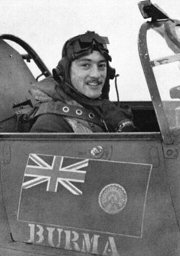
Number of Victories: 29
Wing Commander Robert Roland Stanford Tuck (1 July 1916 – 5 May 1987) was a British fighter pilot, flying ace, and test pilot. At the time of his capture in 1942, Tuck had claimed 29 enemy aircraft destroyed, two shared destroyed, six probably destroyed, six damaged, and one shared damaged.
Tuck was born in Catford, southeast London. He joined the Royal Air Force (RAF) on a short service commission as an acting pilot officer and joined 65 Squadron in September 1935 as an acting probationary pilot officer. His pilot officer rank was confirmed in early 1937. In September 1938, he was promoted to flying officer, and in May 1940, he was posted to 92 Squadron, based at Croydon, as a flight commander flying Supermarine Spitfires 🔗.
Tuck led his first combat patrol on 23 May 1940, over Dunkirk, claiming three German fighters shot down. The following day he shot down two German bombers. His combat successes continued into July and August as the Battle of Britain gathered pace. On 11 September, Tuck was promoted to acting squadron leader and posted to command the Hawker Hurricane 🔗-equipped No. 257 Squadron RAF, based at RAF Coltishall, where he continued to claim further victories. In June 1941, Tuck survived being shot down over the English Channel and being rescued by a Gravesend coal barge. Tuck claimed a total of seven destroyed, four probables, and two damaged on the Hawker Hurricane.
In July 1941, Tuck was promoted to acting wing commander and appointed wing leader at RAF Duxford, where he led fighter sweeps into northern France. His Spitfire was hit by an enemy ground-based flak near Boulogne on 28 January 1942 and forced to crash land. He was taken prisoner and spent the next couple of years in Stalag Luft III at Żagań and later Belaria. In company with the Polish RAF pilot Zbigniew “Zbishek” Kustrzyński, he finally escaped successfully on 1 February 1945. He eventually to find his way to the British Embassy in Moscow and boarded a ship from Russia to Southampton.
Following retirement, Tuck continued flying as a test pilot, including working on the RAF’s long-serving English Electric Canberra.
Medals and Awards
Distinguished Service Order, Distinguished Flying Cross & Two Bars, Air Force Cross, Mentioned in Despatches, Distinguished Flying Cross (United States).
#7 - Frank Reginald “Chota” Carey
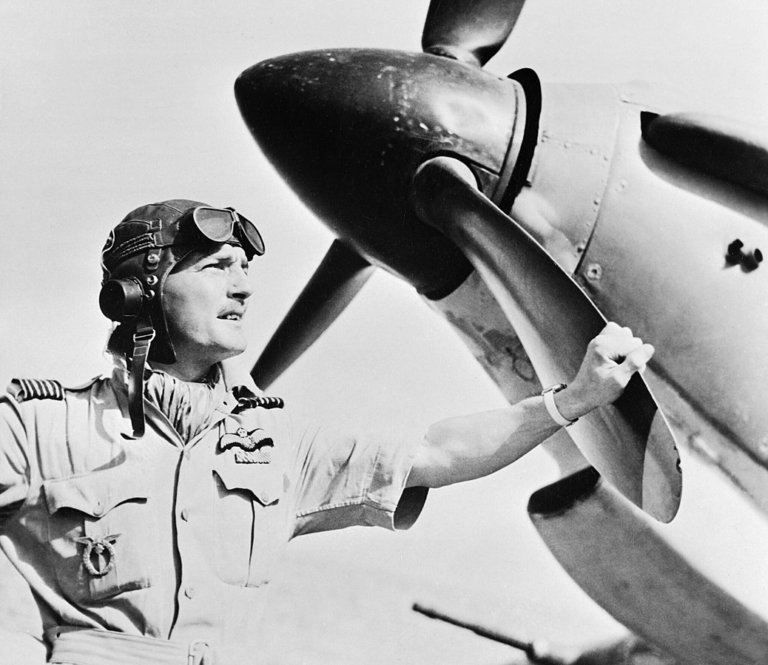
Number of Victories: 28
Frank Reginald “Chota” Carey (7 May 1912 – 6 December 2004) was a Royal Air Force (RAF) fighter pilot and flying ace credited with 23 enemy aircraft shot down, six shared destroyed, four unconfirmed destroyed, seven probable, two destroyed on the ground and ten damaged.#
Carey was educated at Belvedere School before he joined the RAF in September 1927 at the age of 15 as an apprentice metal rigger. After completing the apprenticeship, he was assigned to No. 43 Squadron RAF based at RAF Tangmere. In 1933 he converted to the role of a fitter at RAF Worthy Down and in 1935, applied to become a fighter pilot. He completed training in 1936 and became an established pilot by 1939.
In September 1939, Carey flew defensive patrols over eastern Scotland, where he gained his first successes. Commissioned as a pilot officer in April 1940, he transferred to No. 3 Squadron RAF and participated in the Battle of France, where he had seven enemy aircraft shot down and two probably shot down. On 14 June, he was promoted to flying officer, and from 9 July to 18 August 1940, Carey flew in the Battle of Britain, accounting for a further nine enemy aircraft destroyed.
Carey was given command of No. 135 Squadron RAF, as an acting squadron leader, in August 1941, where he led the formation against the Japanese invasion of Burma. In February 1942 he was promoted to wing commander and by the end of the year had shot down nine Japanese aircraft. After being sent to RAF for Air Officer Commanding (AOC) Air Fighting Training Unit 1 and promoted to group captain for Egypt as AOC at OTU 73, in July 1945, he moved to England as Group Captain Tactics at the Central Flying Establishment until the Japanese surrender.
Following World War II, he continued his career in the RAF until 1958, when he moved to Australia to work for the Rolls Royce Aero Engine Division. He died in Chichester, aged 92.
Medals and Awards
Commander of the Order of the British Empire, Distinguished Flying Cross & Two Bars, Air Force Cross
Distinguished Flying Medal, Silver Star (United States).
#8 - James Harry “Ginger” Lacey
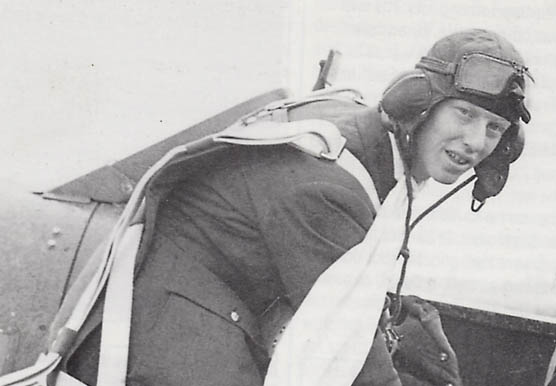
Number of Victories: 28
James Harry Lacey (1 February 1917 – 30 May 1989) was one of the top-scoring Royal Air Force fighter pilots of the Second World War and the second-highest scoring RAF fighter pilot of the Battle of Britain. He was credited with 28 enemy aircraft destroyed, five probables and nine damaged.
Lacey left King James Grammar School, Knaresborough in 1933 and spent four years as an apprentice pharmacist. He joined the RAFVR (Royal Air Force Volunteer Reserve) in January 1937 as a trainee pilot at Perth, Scotland and become an instructor at the Yorkshire Flying School, accumulating 1,000 hours of flight time before the war.
Called up at the outbreak of war, he joined No. 501 Squadron RAF. Lacey experienced his first combat on 10 May 1940, when the squadron was moved to Bétheniville in France. He destroyed a Heinkel He 111 🔗 of KG 53 and an escorting Messerschmitt Bf 109 🔗 on one sortie on 13 May. He claimed two more He 111s on 27 May before the squadron was withdrawn to England on 19 June, having claimed nearly 60 victories.
Lacey became one of the highest-scoring pilots of the Battle of Britain, with No. 501 based at Gravesend or Croydon. On 20 July 1940, he shot down a Bf 109E of Jagdgeschwader 27, and claimed a destroyed Ju 87 and a “probable” Ju 87 on 12 August. He destroyed a Ju 88, damaged a Dornier Do 17 on 24 August and shot down a Bf 109 of Jagdgeschwader 3 on 29 August. On 23 August 1940 he was awarded the Distinguished Flying Medal after the destruction of 6 enemy aircraft. He continued destroying and damaging aircraft throughout the Battle of France and the Battle of Britain, and he was shot down or forced to land due to combat no less than nine times. By 26 November 1940, he had 23 claims.
Lacey was commissioned a pilot officer on 25 January 1941 and promoted to acting flight lieutenant in June. Lacey was one of the few RAF pilots on operational duties on both the opening and closing day of the war. While based in India, he claimed his last aircraft on 19 February 1945, shooting down a Japanese Army Air Force Nakajima Ki 43 “Oscar” with only nine 20mm cannon rounds.
His final tally was 28 confirmed, four probables, and nine damaged.
Medals and Awards
Distinguished Flying Medal & Bar, Mentioned in Despatches, Croix de guerre (France).
#9 - Adolf Gysbert “Sailor” Malan
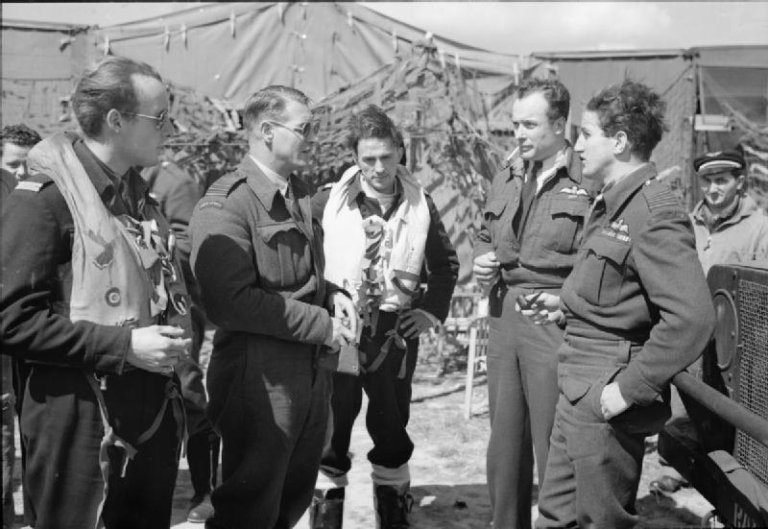
Number of Victories: 27
Adolph Gysbert Malan (24 March 1910 – 17 September 1963), better known as Sailor Malan, was a South African fighter pilot and flying ace in the Royal Air Force. He led No. 74 Squadron RAF during the Battle of Britain. At the time he was the RAF’s leading ace, and one of the highest-scoring pilots to have served wholly with Fighter Command during World War II.
Malan joined the South African Training Ship General Botha in 1924 or 1925 as a naval cadet at the age of 14, and on 5 January 1928 engaged as an officer cadet aboard the Landsdown Castle which later earned him the nickname of “Sailor” amongst his pilot colleagues. On 19 February 1932, he joined the Royal Naval Reserve as an acting sub-lieutenant, and was commissioned a sub-lieutenant on 18 June 1935.
Malan volunteered to the RAF and learned to fly in the de Havilland Tiger Moth at an elementary flying school near Bristol, flying for the first time on 6 January 1936. He was commissioned as an acting pilot officer on 2 March and completed training by the end of the year, when he was sent to join 74 Squadron. He was promoted to acting flight lieutenant on 2 March 1939.
No. 74 Squadron saw its first action only 15 hours after war was declared. Malan was awarded the Distinguished Flying Cross, having achieved five ‘kills’ during the evacuation of the British Army from Dunkirk on 28 May 1940. On 6 July, he was promoted to the substantive rank of flight lieutenant.
On 8 August, Malan was given command of 74 Squadron and promoted to acting squadron leader. On 11 August and intercepting a raid near Dover, 74 had claimed to have shot down 38 aircraft, and was known from then on as “Sailor’s August the Eleventh”. He finished his fighter career in 1941 with 27 destroyed, 7 shared destroyed and 2 unconfirmed, 3 probables and 16 damaged.
After tours to the USA and the Central Gunnery School, Malan was promoted to temporary wing commander on 1 September 1942 and became station commander at Biggin Hill. In October 1943 he became officer commanding No. 19 Fighter Wing, RAF Second Tactical Air Force, then commander of the No. 145 (Free French) Wing in time for D-day, leading a section of the wing over the beaches during the late afternoon.
Malan is considered an exceptional shot and a highly aggressive fighter-pilot, as well as a superb tactician who would cast an influence on successive generations of RAF fighter pilots who followed after him.
Medals and Awards
Distinguished Service Order & Bar, Distinguished Flying Cross & Bar, Croix de guerre (Belgium), War Cross (Czechoslovakia), Legion of Honour (France), Croix de guerre (France)
#10 - Erick Stanley “Sawn Off Lockie” Lock
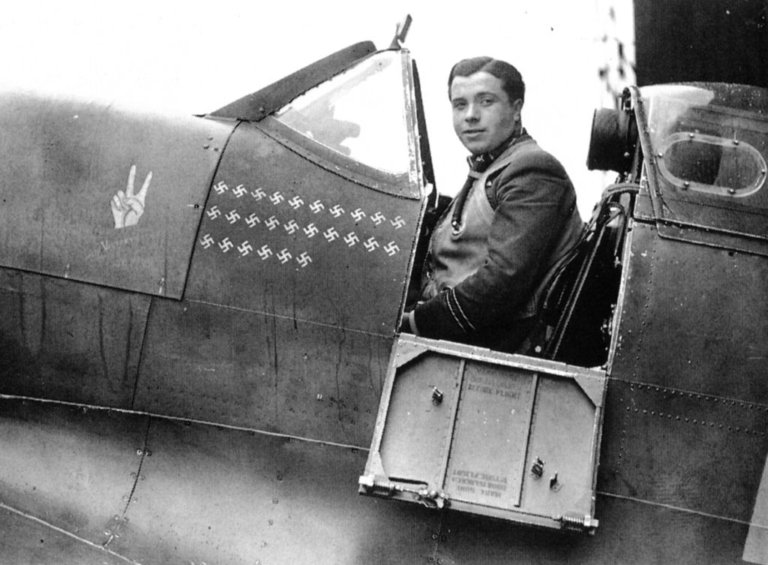
Number of Victories: 26
Eric Stanley Lock (19 April 1919 – 3 August 1941) was a Royal Air Force (RAF) fighter pilot and flying ace with a victory total of 20 German fighter aircraft, 18 of them Messerschmitt Bf 109s.
Lock was born in Shrewsbury and had his first experience of flying as a teenager (on his 14th birthday his father treated him to a five-shilling, 15-minute flight with Sir Alan Cobham’s Air Circus). In the late 1930s, he decided that he would prefer to fight the war as an airman and joined the RAF in 1939. He completed his training in 1940 and was posted to No. 41 Squadron RAF in time for the Battle of Britain, where he became the RAF’s most successful Allied pilot during the battle, shooting down 21 German aircraft and sharing in the destruction of one.
Lock continued to shoot enemy aircraft down regularly until, on 8 November 1940, his Spitfire was badly damaged during a skirmish with several Bf 109s over Beachy Head in East Sussex. Lying in the aircraft for some two hours, he was found by two patrolling British Army soldiers and carried two miles on an improvised stretcher. He had to undergo fifteen separate operations over the following three months to remove shrapnel and other metal fragments from his wounds.
In June 1941 he was promoted to flying officer and requested to report back for immediate flying duty with No. 41 Squadron. Four weeks later he was promoted to flight lieutenant and posted to No. 611 Squadron in command of B Flight.
On 3 August 1941, he spotted a column of German troops and vehicles on the road near the Pas-de-Calais. He’s believed to have been shot down by ground fire after signaling the attack to his wingman and seen to peel off from the formation. Neither his body nor his Spitfire Mk V, W3257, have ever been found.

